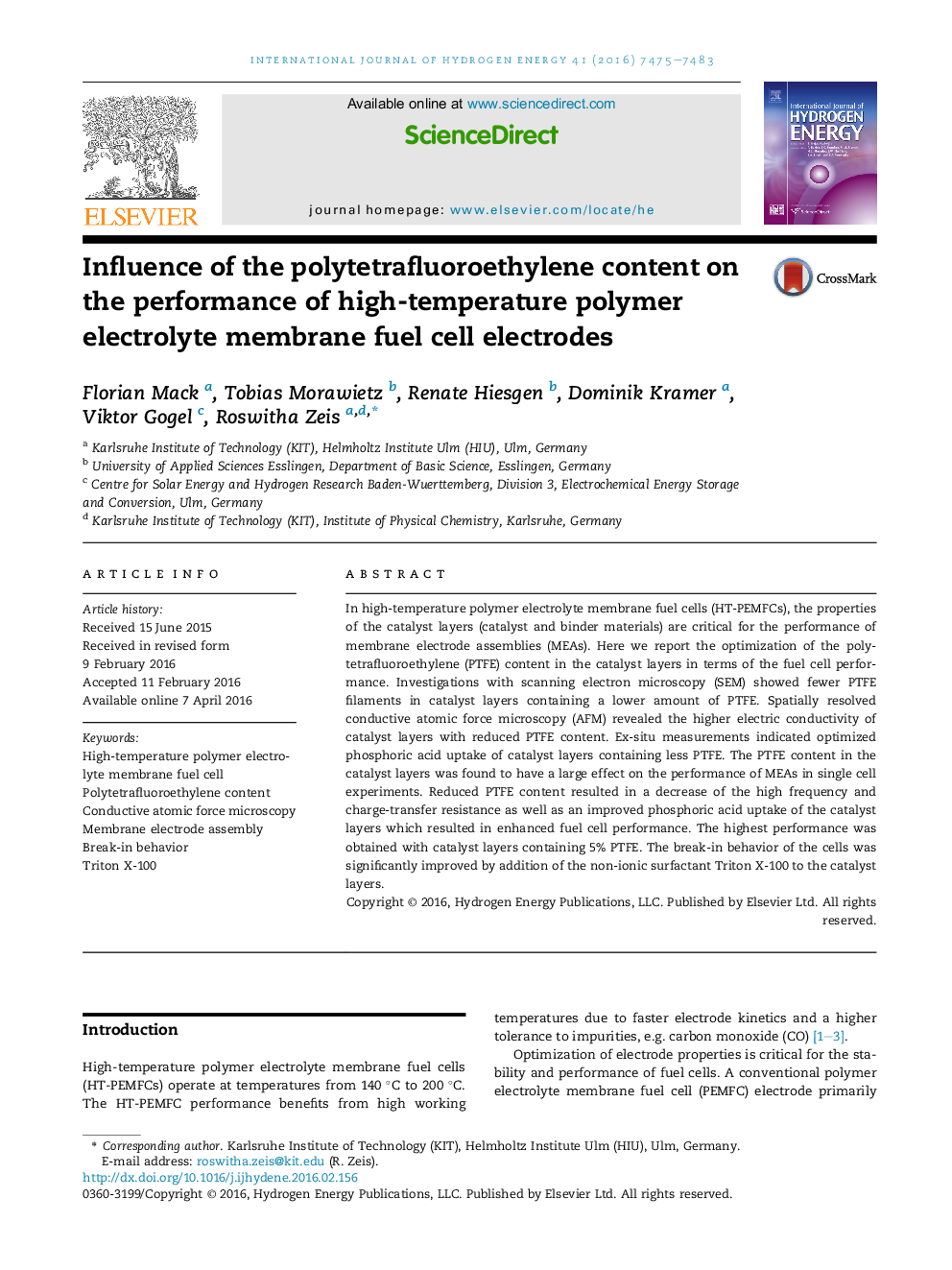| Article ID | Journal | Published Year | Pages | File Type |
|---|---|---|---|---|
| 1268700 | International Journal of Hydrogen Energy | 2016 | 9 Pages |
•Impact of the PTFE content in the GDEs on the HT-PEMFC performance was studied.•Less PTFE in the catalyst layers increases the electric conductivity of the GDEs.•Atomic force microscopy visualizes the PTFE distribution in the catalyst layers.•Addition of the surfactant Triton X-100 to the GDE improves the break-in performance.•The highest performance was achieved with 5% PTFE in the catalyst layers.
In high-temperature polymer electrolyte membrane fuel cells (HT-PEMFCs), the properties of the catalyst layers (catalyst and binder materials) are critical for the performance of membrane electrode assemblies (MEAs). Here we report the optimization of the polytetrafluoroethylene (PTFE) content in the catalyst layers in terms of the fuel cell performance. Investigations with scanning electron microscopy (SEM) showed fewer PTFE filaments in catalyst layers containing a lower amount of PTFE. Spatially resolved conductive atomic force microscopy (AFM) revealed the higher electric conductivity of catalyst layers with reduced PTFE content. Ex-situ measurements indicated optimized phosphoric acid uptake of catalyst layers containing less PTFE. The PTFE content in the catalyst layers was found to have a large effect on the performance of MEAs in single cell experiments. Reduced PTFE content resulted in a decrease of the high frequency and charge-transfer resistance as well as an improved phosphoric acid uptake of the catalyst layers which resulted in enhanced fuel cell performance. The highest performance was obtained with catalyst layers containing 5% PTFE. The break-in behavior of the cells was significantly improved by addition of the non-ionic surfactant Triton X-100 to the catalyst layers.
Graphical abstractFigure optionsDownload full-size imageDownload as PowerPoint slide
